
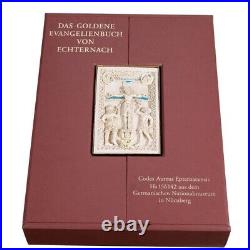
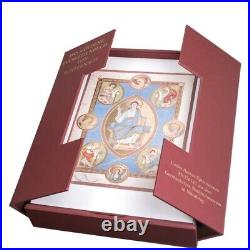
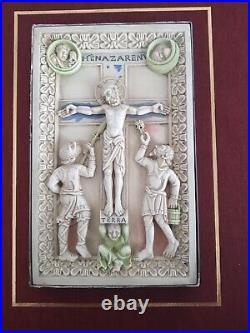
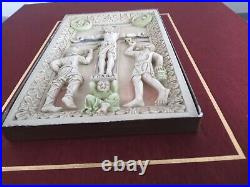
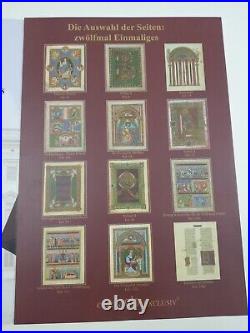

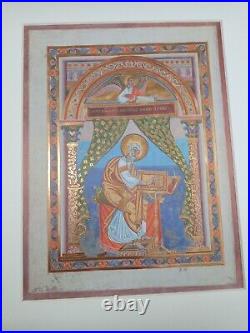
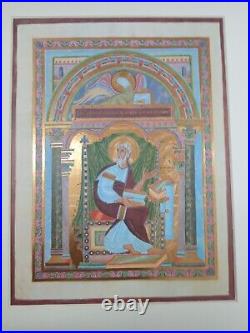
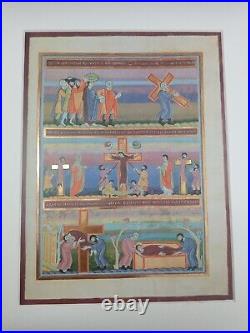
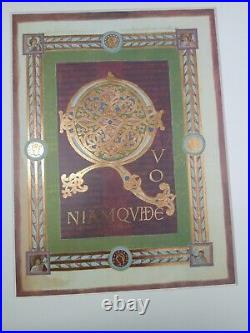
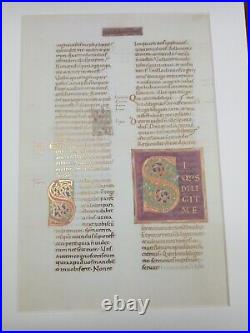
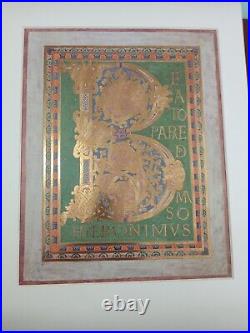

The Golden Book of the Gospels from Echternach. Codex Aureus Epternacensis Hs 156142 from the Germanic National Museum in Nuremberg. A limited edition, boxed collection of 12 facsimile plates under passepartout and commentary by Johannes Pommeranz (in German), from the Codex Aureus of Echternach. In beautiful original box with replica of the Crucifixion relief. Published by Coron-Verlag, Kreuzlingen 2015. Number 59 of 995 copies. Display Box Dimension: 38 x 52 x 9 cm. The twelve facsimile sheets presented are gilded with 22 carat gold. The process used follows the gilding method of the medieval painter monks and is mastered solely by the bookbindery Richard Mayer in Esslingen. Each cassette is elaborately made individually by hand and is covered with purple full-grain leather. The twelve images are presented in bevel cut passe-partouts. An important element of the cassette itself is the crucifixion relief, which is also the focus of the ceremonial lid of the Nuremberg original. The group in the crucifixion relief is shown in simplified form: Christ in the centre, Longinus with the spear on one side, Stephaton with the bucket of vinegar, with hyssop stalks and a sponge for the thirsting Christ on the other. Unlike in the biblical account, Jesus stands firmly on the earth (TERRA); Sun and moon mourn. Theologically it is interesting that according to Augustine the opening of the Lord’s side also means the flow of the sacraments in a new church; the sponge carrier represents gall and vinegar of the ancient (Jewish) Church. All in all, the scene has a lot that is special: Christ’s feet are not fixed, the burden of his death is not unbearable, in contrast to other depictions. About the original manuscript. The Codex Aureus Epternacensis or The Golden Book of the Gospels of Echternach is one of the most impressive manuscripts that have survived to this day. It comes from the famous scriptorium of the Benedictine Abbey of Echternach in Luxembourg, which produced dozens of masterpieces of Carolingian and Ottonian illumination. Written entirely in gold ink, the text is accompanied by 64 splendid miniatures, numerous purple pages, as well as five portraits of the Evangelists, decorative canon tables and other ornamental elements. Classic architecture with arches and columns, borders with geometric and acanthus leaf ornaments, and braided initials adorn the text.
